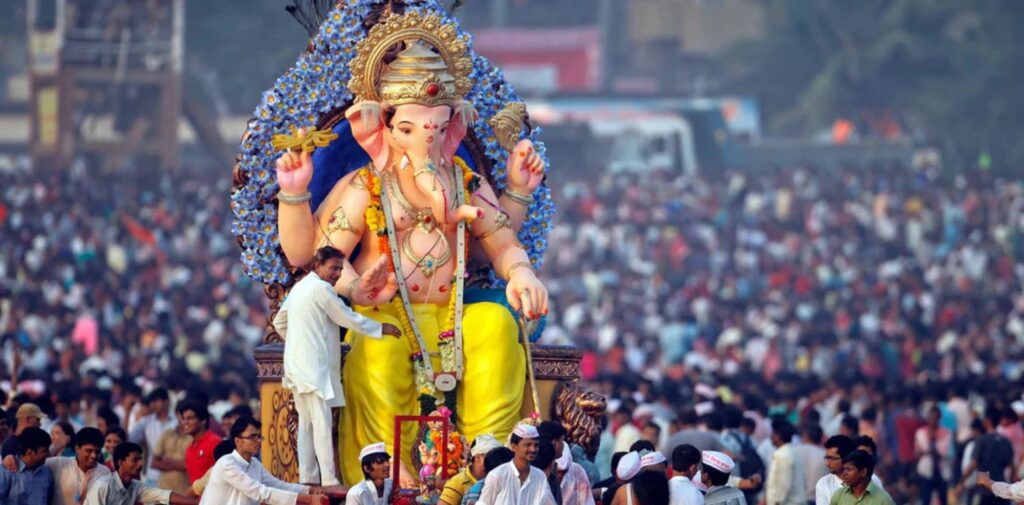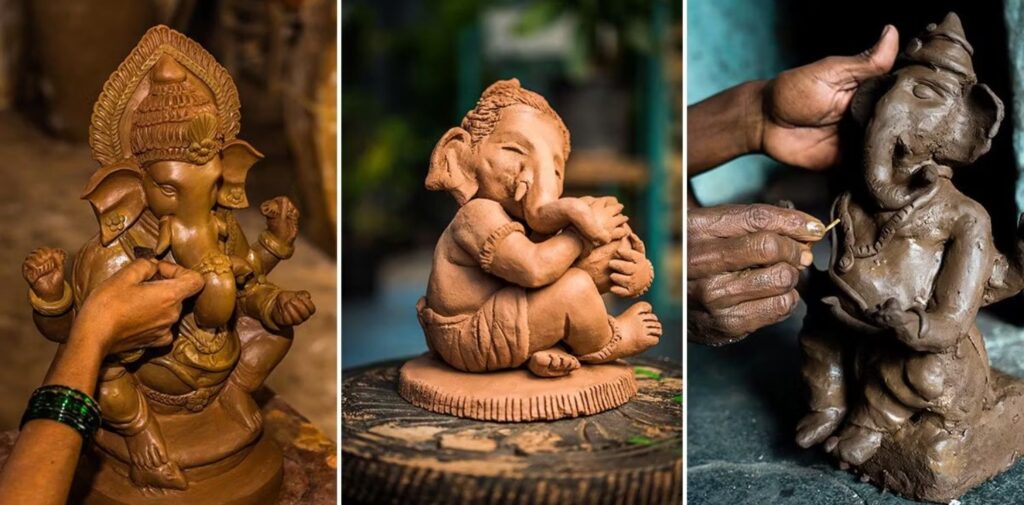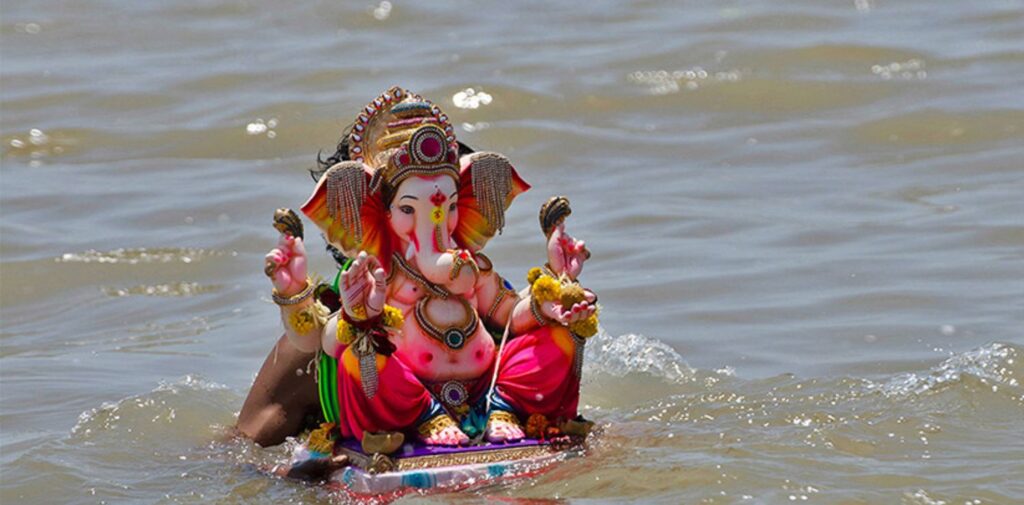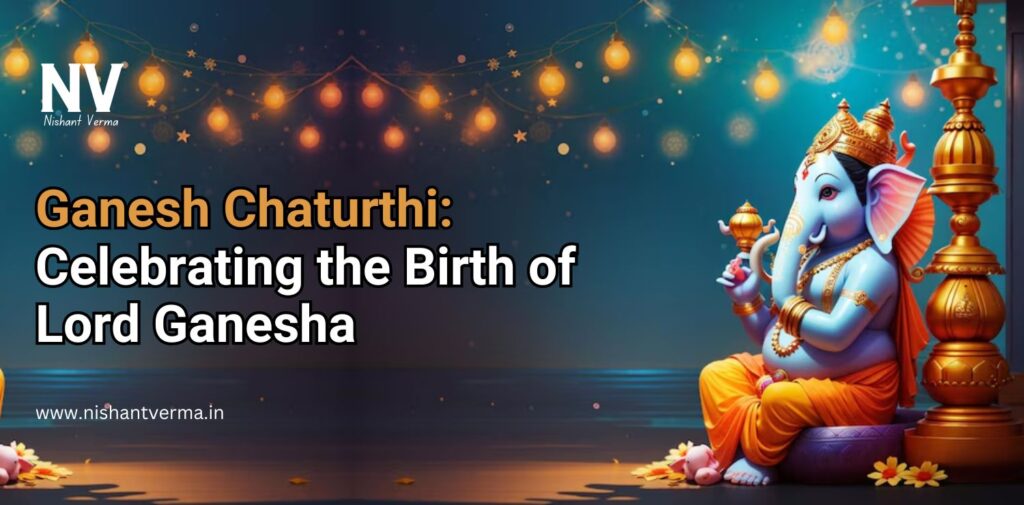Ganesh Chaturthi, also known as Vinayaka Chaturthi, is one of the most prominent Hindu festivals celebrated across India and by Hindus worldwide. This grand celebration marks the birth of Lord Ganesha, the elephant-headed god revered as the remover of obstacles, the patron of arts and sciences, and the deity of wisdom and new beginnings. The festival is celebrated with great enthusiasm, devotion, and festivity, lasting for up to 10 days in some regions, especially in the states of Maharashtra, Karnataka, Tamil Nadu, and Goa.
Historical Significance of Ganesh Chaturthi
The origins of Ganesh Chaturthi can be traced back centuries, with mentions in ancient Hindu scriptures. According to the Puranas, Lord Ganesha was created by Goddess Parvati, the consort of Lord Shiva. There are various stories about his creation, but the most popular one states that Parvati created Ganesha from the sandalwood paste she used for her bath.
She breathed life into him and instructed him to stand guard while she bathed. When Lord Shiva returned and tried to enter, Ganesha, unaware of who he was, stopped him. This angered Shiva, and in a fit of rage, he beheaded Ganesha. Upon seeing her son lifeless, Parvati was heartbroken. To console her, Shiva ordered his attendants to bring the head of the first living creature they encountered, which happened to be an elephant. Thus, Ganesha was revived with an elephant’s head, and Shiva granted him the status of being one of the most revered deities.

Historically, the celebration of Ganesh Chaturthi gained prominence during the reign of the Maratha ruler, Chhatrapati Shivaji, who used the festival to promote culture and nationalism. However, it was during India’s freedom struggle in the late 19th century that the festival gained mass popularity. The social reformer and freedom fighter Lokmanya Tilak transformed Ganesh Chaturthi from a private celebration to a large public festival to unite Indians against British colonial rule. This public celebration helped bring people together, transcending the boundaries of caste, class, and religion.
Religious Significance of Lord Ganesha
In Hinduism, Lord Ganesha holds immense religious significance. He is worshiped as the god of wisdom, knowledge, and prosperity. Before starting any new venture, project, or journey, Hindus often invoke Lord Ganesha to remove any obstacles that may come in the way. His elephant head symbolizes wisdom and understanding, while his large ears signify a keen sense of listening. His small eyes represent concentration, while his large belly signifies that one should be able to digest both the good and bad experiences in life.
Lord Ganesha is also considered the scribe who wrote down the Mahabharata as dictated by the sage Vyasa. This association with one of the greatest epics of Hindu mythology adds to his significance as the deity of intellect and learning.
Ganesh Chaturthi: Preparations and Rituals
Preparations for Ganesh Chaturthi begin months in advance. Artisans craft beautiful clay idols of Lord Ganesha in various sizes, ranging from a few inches to several feet tall. These idols are often painted in bright colors and adorned with ornaments. Families bring home smaller idols for private celebrations, while large idols are placed in public pandals (temporary structures) for community worship.
On the day of Ganesh Chaturthi, which falls on the fourth day of the Hindu month of Bhadrapada (August-September), devotees perform a ritual called “Pranapratishtha,” where life is invoked into the idol through mantras and prayers. This is followed by offerings of sweets, fruits, flowers, and incense. The most beloved sweet offered to Ganesha is the “modak,” a steamed or fried dumpling filled with coconut and jaggery, as it is said to be his favorite.

Devotees perform “aarti” (a devotional song) in the morning and evening and chant hymns and prayers in praise of Lord Ganesha. Many people observe fasting during the festival and refrain from consuming non-vegetarian food. The chants of “Ganpati Bappa Morya, Mangal Murti Morya” fill the air, creating a spiritually charged atmosphere.
In public celebrations, pandals are decorated elaborately, often depicting themes from mythology or social issues. Cultural programs, including music, dance, and drama, are organized, adding to the festive spirit. Ganesh Chaturthi is not only a religious event but also a social and cultural extravaganza that brings people together.
Symbolism of Lord Ganesha’s Appearance
The form of Lord Ganesha is filled with symbolic elements. Each part of his body represents a profound philosophical idea:
- Elephant Head: His large elephant head symbolizes wisdom and knowledge. Elephants are known for their intelligence and memory, qualities that Ganesha embodies.
- Big Ears: His large ears signify that one should always listen more and talk less. Listening is considered a key aspect of gaining knowledge.
- Trunk: The trunk of Ganesha is flexible and can pick up both small and large objects, symbolizing adaptability and efficiency in life.
- One Broken Tusk: Ganesha’s broken tusk represents the idea of sacrifice. According to mythology, he broke it off to use as a pen to write the Mahabharata. This signifies that one must sometimes let go of something valuable for a higher purpose.
- Four Hands: In his four hands, Ganesha holds a goad, a noose, a broken tusk, and a modak. The goad symbolizes the need to steer life on the right path, the noose represents the restraint of desires, the broken tusk represents sacrifice, and the modak symbolizes the rewards of a disciplined and spiritual life.
- Mouse as Vehicle: Ganesha’s vehicle is a small mouse, symbolizing humility and the control of ego. Despite his enormous size, he rides a tiny creature, teaching that strength should be accompanied by humility.
Environmental Concerns and Eco-Friendly Ganesh Chaturthi
In recent years, there has been growing concern about the environmental impact of Ganesh Chaturthi, especially due to the immersion of idols made from non-biodegradable materials like plaster of Paris in water bodies. These idols, along with the chemical paints used on them, cause water pollution and harm aquatic life.

To address these concerns, many communities and individuals have started opting for eco-friendly Ganesha idols made from clay and natural colors, which dissolve easily in water and do not harm the environment. There is also a growing trend of performing symbolic immersions or using artificial tanks for the immersion of idols, reducing the environmental footprint of the festival.
Ganesh Visarjan: The Farewell Procession
The culmination of the Ganesh Chaturthi festival is the Ganesh Visarjan, the ritual immersion of the Ganesha idol in a water body, symbolizing the cycle of birth, life, and death. It is believed that after the idol is immersed, Lord Ganesha returns to his abode, taking with him the misfortunes of his devotees and leaving behind his blessings.

The immersion is often accompanied by large processions, where devotees dance, sing, and chant praises of Ganesha. In cities like Mumbai, the sight of thousands of devotees accompanying huge Ganesha idols for immersion is a spectacle of devotion, joy, and celebration. The immersion typically takes place on the 1st, 3rd, 5th, 7th, or 10th day of the festival, depending on regional customs.
Conclusion
Ganesh Chaturthi is a festival that transcends religious and cultural boundaries, uniting people in devotion, joy, and celebration. It is a time when families come together, communities collaborate, and people reflect on the values that Lord Ganesha embodies: wisdom, humility, and the ability to overcome obstacles. As the festival evolves, it continues to inspire a spirit of unity and environmental responsibility, reminding us of the balance between tradition and progress.
As we celebrate Ganesh Chaturthi, let us invoke Lord Ganesha’s blessings to remove the obstacles from our paths, guide us toward wisdom, and inspire us to live a life of humility, service, and love. Ganpati Bappa Morya!




